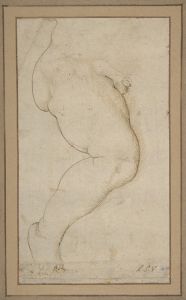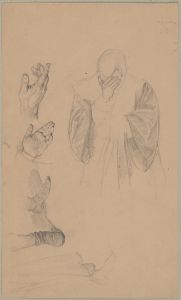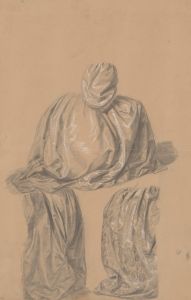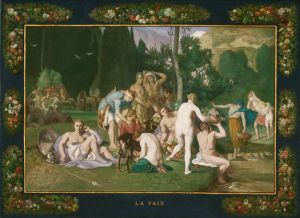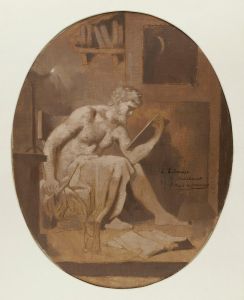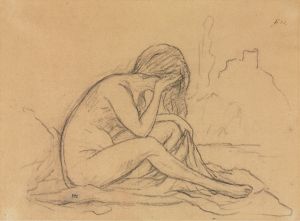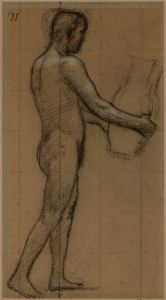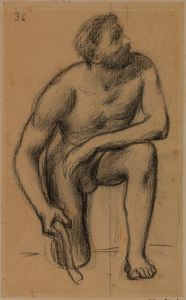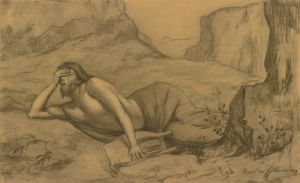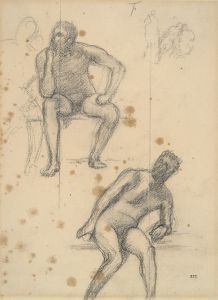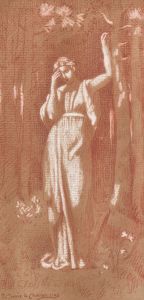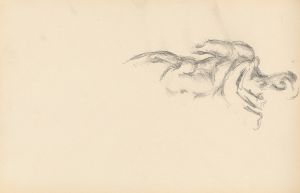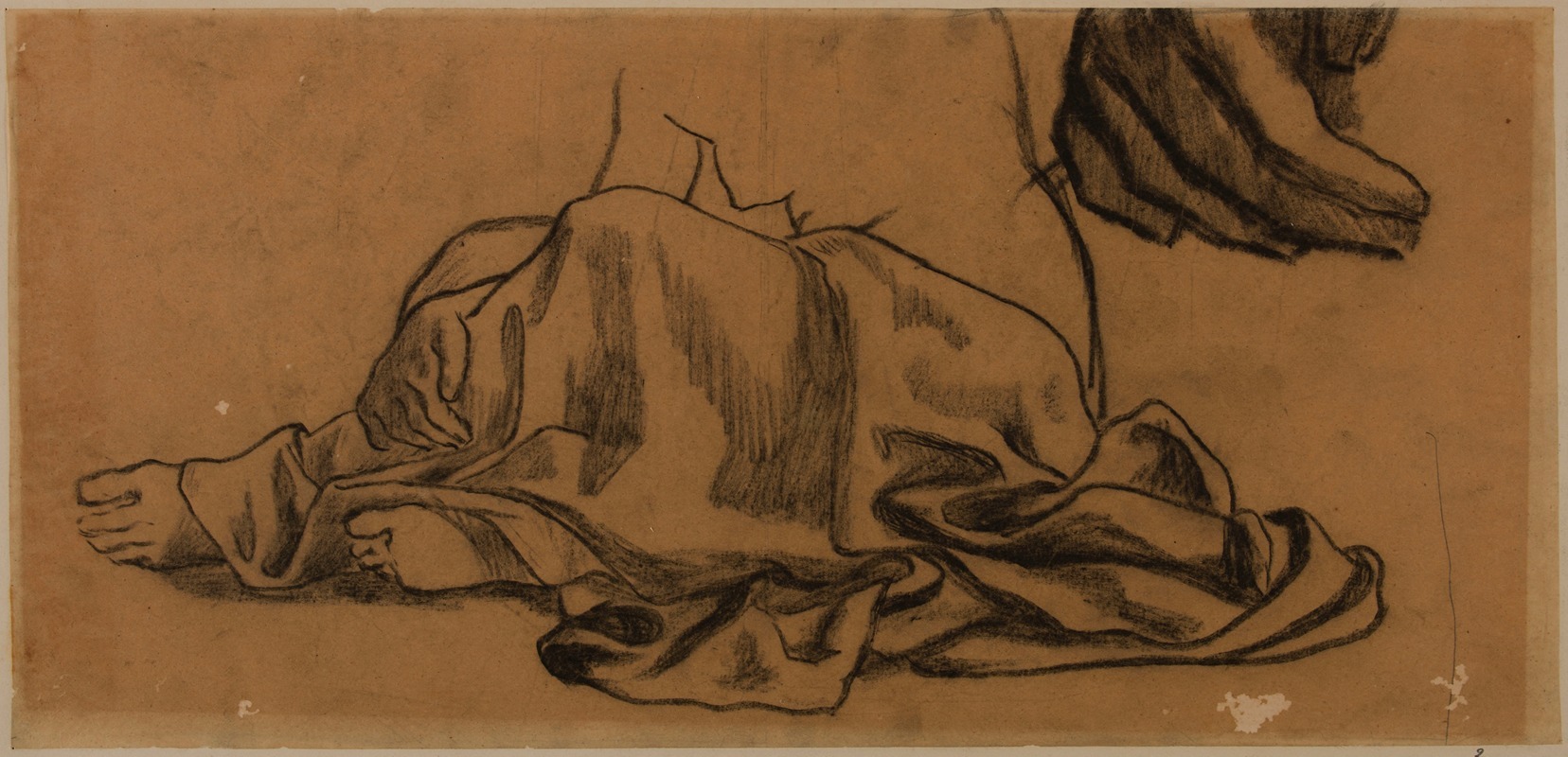
Etude de draperie et étude de doigts
A hand-painted replica of Pierre Puvis de Chavannes’s masterpiece Etude de draperie et étude de doigts, meticulously crafted by professional artists to capture the true essence of the original. Each piece is created with museum-quality canvas and rare mineral pigments, carefully painted by experienced artists with delicate brushstrokes and rich, layered colors to perfectly recreate the texture of the original artwork. Unlike machine-printed reproductions, this hand-painted version brings the painting to life, infused with the artist’s emotions and skill in every stroke. Whether for personal collection or home decoration, it instantly elevates the artistic atmosphere of any space.
Pierre Puvis de Chavannes was a prominent French painter known for his mural paintings and contributions to the Symbolist movement in the 19th century. One of his lesser-known works, "Etude de draperie et étude de doigts," translates to "Study of Drapery and Study of Fingers." This piece is a study drawing, which reflects Puvis de Chavannes' meticulous approach to understanding the human form and the intricate details of clothing and anatomy.
Puvis de Chavannes was born on December 14, 1824, in Lyon, France. He initially studied engineering but later pursued art, studying under prominent artists such as Eugène Delacroix and Thomas Couture. His work is characterized by a classical style, often focusing on allegorical themes and the human figure. Puvis de Chavannes is best known for his large-scale murals, which adorn public buildings in France, including the Panthéon in Paris and the Museum of Fine Arts in Lyon.
"Etude de draperie et étude de doigts" is a testament to Puvis de Chavannes' dedication to preparatory studies, which were crucial to his artistic process. Such studies allowed him to experiment with composition, form, and texture before committing to larger works. This particular study likely served as a foundational exercise in understanding how fabric drapes over the human body and how fingers can be realistically portrayed in various positions.
The study of drapery has been a significant aspect of art education for centuries, as it helps artists understand how to depict the play of light and shadow on different textures and forms. Similarly, the study of fingers is essential for capturing the expressiveness and dexterity of the human hand, which can convey a wide range of emotions and actions in art.
Puvis de Chavannes' attention to detail in these studies reflects his broader artistic philosophy, which emphasized harmony, balance, and the idealization of the human form. His work often drew inspiration from classical antiquity and Renaissance art, aiming to evoke a sense of timelessness and universality.
While "Etude de draperie et étude de doigts" may not be as widely recognized as some of Puvis de Chavannes' larger works, it provides valuable insight into his artistic process and the foundational skills that underpinned his more ambitious projects. These studies highlight the importance of preparatory work in the creation of art, demonstrating how artists like Puvis de Chavannes meticulously planned and refined their compositions before executing them on a grand scale.
Puvis de Chavannes' influence extended beyond his lifetime, impacting subsequent generations of artists, including the Symbolists and Post-Impressionists. His commitment to exploring the human form and the subtleties of drapery and anatomy continues to be appreciated by art historians and enthusiasts today.
In summary, "Etude de draperie et étude de doigts" by Pierre Puvis de Chavannes is a study drawing that exemplifies the artist's dedication to understanding the intricacies of drapery and anatomy. It serves as a window into his artistic process and his broader contributions to the art world, highlighting the importance of preparatory studies in achieving the harmonious and idealized compositions for which he is renowned.





